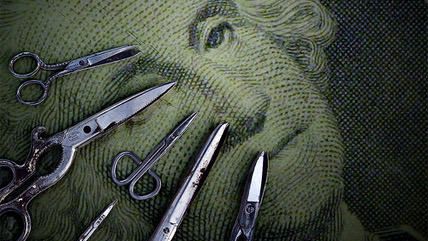Are Minimum-Wage Hikers Being Stingy?
They like one-sided research. They don't like that this research paints them as cheap.

SACRAMENTO — Foes of minimum-wage increases often ask supporters why they are so stingy. If a $10 minimum wage is unquestionably beneficial to the workers and the economy, then why not ratchet that number up to $20 an hour or even $50. They don't really want those absurdly high minimum wages, but want to showcase how damaging such an idea can be to the economy.
I used to downplay that argument as hyperbolic, but after reading recent research used to tout the new San Diego measure, I see the logic of these minimum-wage critics. Increasingly, wage-hike supporters claim that there virtually is no measurable down side to their proposal, that giving lower-wage workers more money helps the economy.
If a little boost helps a lot, a bigger boost would help even more, right?
Earlier this month, the union-backed Center on Wage and Employment Dynamics at the University of California, Berkeley, published a short study estimating the effect of San Diego's proposed minimum-wage law. (The increase recently was approved, 6-3. It will likely be vetoed by Mayor Kevin Faulconer, but City Council has enough votes to override the veto. The business community is mulling a plan to put the matter to voters via referendum.)
The report confirms a massive local economic bonanza — of $260 million a year, as lower-income earners gain additional dollars to buy food and other necessities, according to the San Diego-based Center on Policy Initiatives (CPI). It cites the study as proof: "Raising the minimum wage is not only the right thing to do; it's smart economic policy."
The Berkeley labor center report finds that 23 percent to 29 percent of San Diego workers will be "affected" by the wage increase, with an average annual earnings increase of $1,400 a year by 2017. An odd thing jumps out from the data and the commentary about it: These economists are taking a static look at the data, considering only the increased income that people will receive. They don't consider any other possibilities.
For instance, there's no accounting for the likelihood that some businesses will cut back benefits to pay for the additional labor costs. Or the possibility that some business owners — already unsure of what the implementation of Obamacare will add to their cost structure — will hire fewer workers or perhaps even lay off some existing workers. Or that some new businesses might not bother getting started.
How can economists analyze the costs and benefits of any particular policy by only looking at the benefits?
If there's only an upside, then there's a lot of work to do. In its calculator for San Diego residents, the Massachusetts Institute of Technology has determined that the city's planned increase to $11.50 by 2017 (plus five mandated sick days) is barely sufficient. That wage is OK for single people, but the living wage should be closer to $34 an hour for an adult with three kids, according to the calculator.
California's minimum wage, which was raised to $9 an hour in July and will be raised to $10 by 2016, isn't too generous, either. Even in low-cost Imperial County, a decent living wage for a single mom would be close to $20 an hour, based on that same MIT calculation.
"The first step is employers cut back on benefits and try to maintain the same level of employees that they have," said Lawrence McQuillan, an economist at the libertarian Independent Institute in Oakland. "If they still can't get costs under control, they start laying people off. It's a gradual effect. … It's hard for people to get their heads around what they can't see."
That's what good economic analysis should try to do — calculate the unseen costs of things.
CPI's Research Director Peter Brownell admitted that the Berkeley center's data didn't try to wrestle with the costs involved, but he insisted that the broad economic acceptance is that the negative effects are "close to zero." He admitted that "somewhere out there, there's a number that doesn't make sense." But business owners might be afraid to know what that number might be.
It would be nice if economists would at least produce data that analyzed the additional costs and likelihood of cutbacks — and didn't just paint a one-sided picture. But as long as wage-hikers claim higher wages help the economy, it makes sense to wonder why they are being so parsimonious about it.


Show Comments (70)